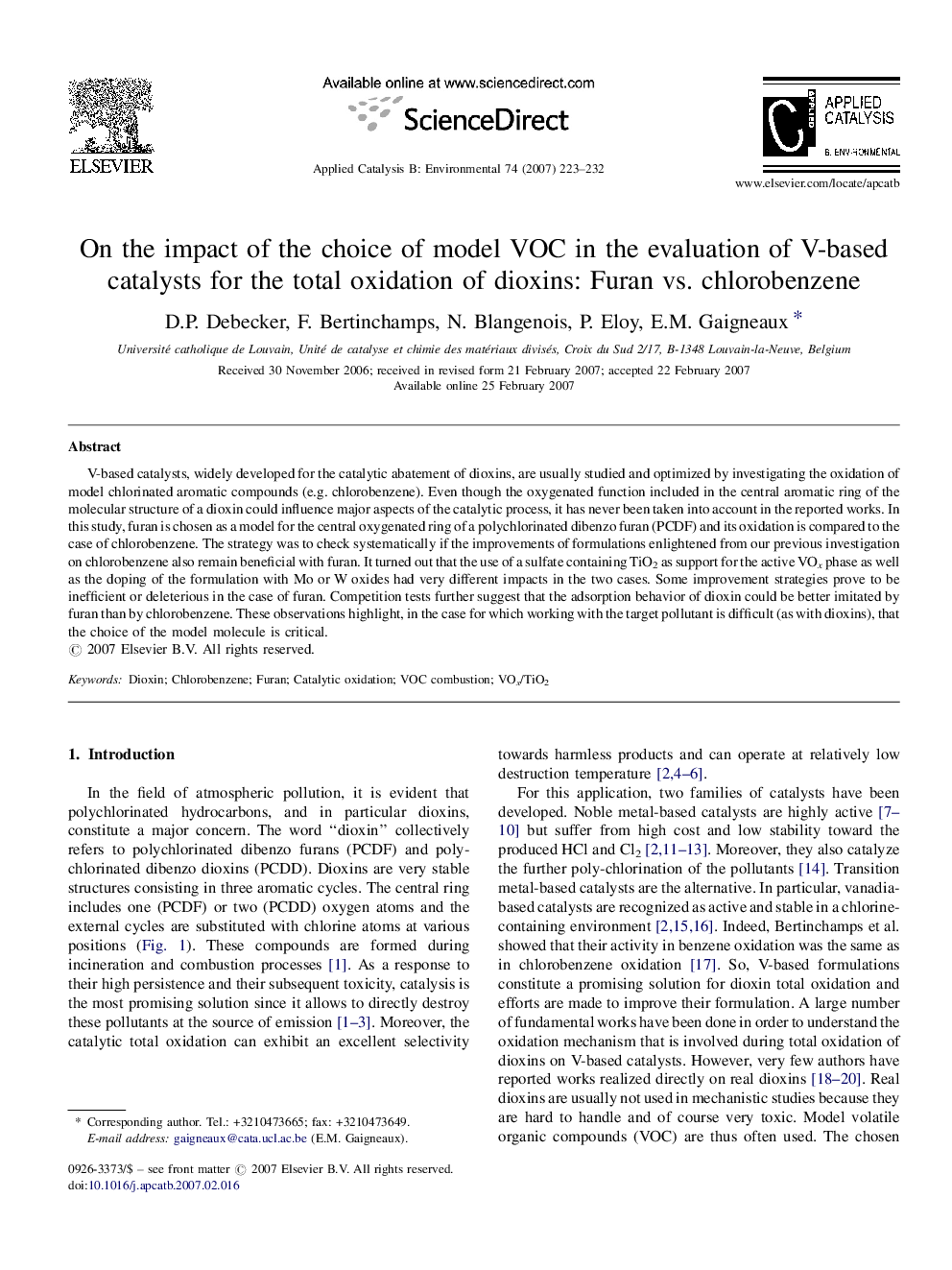| Article ID | Journal | Published Year | Pages | File Type |
|---|---|---|---|---|
| 48592 | Applied Catalysis B: Environmental | 2007 | 10 Pages |
V-based catalysts, widely developed for the catalytic abatement of dioxins, are usually studied and optimized by investigating the oxidation of model chlorinated aromatic compounds (e.g. chlorobenzene). Even though the oxygenated function included in the central aromatic ring of the molecular structure of a dioxin could influence major aspects of the catalytic process, it has never been taken into account in the reported works. In this study, furan is chosen as a model for the central oxygenated ring of a polychlorinated dibenzo furan (PCDF) and its oxidation is compared to the case of chlorobenzene. The strategy was to check systematically if the improvements of formulations enlightened from our previous investigation on chlorobenzene also remain beneficial with furan. It turned out that the use of a sulfate containing TiO2 as support for the active VOx phase as well as the doping of the formulation with Mo or W oxides had very different impacts in the two cases. Some improvement strategies prove to be inefficient or deleterious in the case of furan. Competition tests further suggest that the adsorption behavior of dioxin could be better imitated by furan than by chlorobenzene. These observations highlight, in the case for which working with the target pollutant is difficult (as with dioxins), that the choice of the model molecule is critical.
